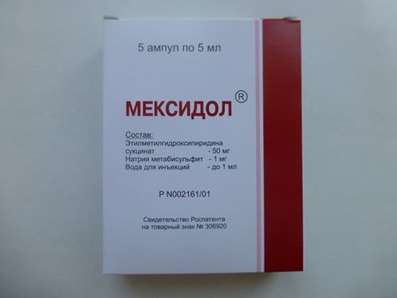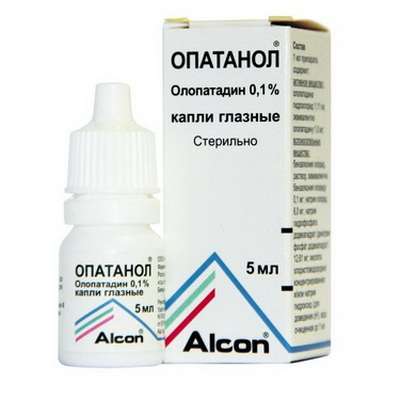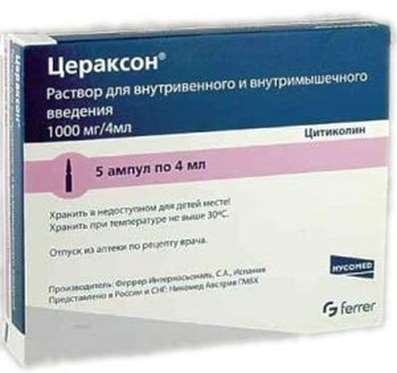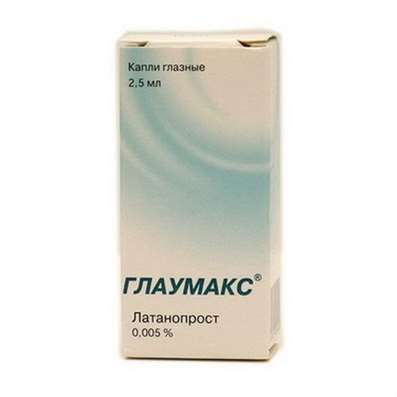Instruction for use: Intraglobin
I want this, give me price
Dosage form: Solution for intravenous administration
Active substance: Immunoglobulinum humanum normale
ATX
J06BA02 Normal human immunoglobulin for intravenous administration
Pharmacological groups:
Immunoglobulins
The nosological classification (ICD-10)
A49.9 Bacterial infection, unspecified: Chronic bacterial infection; Chronic bacterial infections; Anaerobic bacterial infection; Bacterial superinfection; Acute bacterial infection; Bacterial infections of severe course; Intrahospital infections; Gram-negative aerobic pathogen; Secondary bacterial infections; Infections in Patients with Weakened Immunity; Infections in surgery; Postinfectious glomerulonephritis
B20 Disease caused by the human immunodeficiency virus [HIV], manifested as infectious and parasitic diseases
C90 Multiple myeloma and malignant plasma cell neoplasms: Retikuloplasmocytosis; Rustitsky's disease; Rustitskogo-Kahler's disease; Plasma cell myeloma; Myelomatosis
C91.9 Other lymphoid leukemia
C92.9 Myeloid leukemia, unspecified: Anemia in patients with myeloma; Myeloid aplasia of the bone marrow
D69.3 Idiopathic Thrombocytopenic Purpura: Werlhof's Disease; Idiopathic autoimmune thrombocytopenia; Idiopathic thrombocytopenic purpura of adults; Idiopathic thrombocytopenic purpura in adults; Immune idiopathic thrombocytopenic purpura; Immune thrombocytopenia; Bleeding in patients with thrombocytopenic purpura; Evans Syndrome; Thrombocytopenic purpura; Thrombocytopenia of immune origin; Chronic idiopathic thrombocytopenic purpura; Essential thrombocytopenia; Autoimmune thrombocytopenic purpura in pregnancy; Posttransfusion purpura
D80.0 Hereditary hypogammaglobulinemia: Congenital agammaglobulinemia; Congenital hypogammaglobulinemia
D81 Combined Immunodeficiencies: Duncan Syndrome; Combined immunodeficiency; Severe combined immunodeficiency (KID)
D83 Conventional Variable Immunodeficiency: Total Variable Immunodeficiency; Immunodeficiency variable
D84.9 Unspecified Immunodeficiency: Pneumonia in immunodeficient states; Autoimmune disease; Autoimmune diseases; Severe immunodeficiency; immune deficiency; Immunodeficiency; immunodeficiency diseases; Immunodeficiency states due to surgery; Immunotherapy for cancer; Immunomodulation; Infections in patients with weakened immune systems; Correction of immune deficiency; Correction of immunodeficiencies; Correction of a weakened immune system; Correction of a weakened immunity in immunodeficient states; Violation of immunity; Violation of the immune status; Immune System Disorders; Primary immunodeficiency; Maintaining immunity; Lowering the body's defenses; Lowering the immunity; Lowering the immunity of colds and infectious diseases; The decrease of the immune status; Lowered resistance to infections; Lowered resistance to infections and colds; Lowered resistance; Immunosuppression; Predisposition to colds; acquired immune deficiencies; Radiation immunodeficiency; The development of immunodeficiency; Immune dysfunction syndrome; immunodeficiency syndrome; primary immunodeficiency syndrome; Reducing the body's defenses; Immunosuppression; Reduced immune defense; Reducing local immunity; Reducing the total body resistance; The decrease in cell-mediated immunity; Reduced resistance to infections in children; Reducing the body's resistance; Reduced resistance; reduced immunity; Status immunodeficiency; Stimulation of the processes of nonspecific immunity; Heavy selective secondary immunodeficiency; immunity Oppression; Primary immunodeficiency
M30.3 Mucous-cutaneous lymphonodular syndrome [Kawasaki]: Pediatric polyarteritis; Kawasaki disease; Kawasaki Syndrome; Mucous-cutaneous lymphonodulary syndrome; Dermal-mucous lymphadenopathy; Lymphonodular pharyngitis
Z100 * CLASS XXII Surgical practice: Abdominal surgery; adenomectomy; Amputation; Coronary angioplasty; Angioplasty of the carotid arteries; Antiseptic skin treatment for wounds; Antiseptic Hand; Appendectomy; atherectomy; Balloon coronary angioplasty; Vaginal hysterectomy; The coronary bypass; Interventions in the vagina and cervix; Interventions on the bladder; Intervention in the mouth; Restoration and reconstructive surgery; Hand hygiene of medical personnel; Gynecologic surgery; Gynecological intervention; Gynecological surgery; Hypovolemic shock during operations; Disinfection of purulent wounds; Disinfection of wounds edges; Diagnostic intervention; Diagnostic procedures; Cervical Diathermocoagulation; Long-surgery; Replacing the fistula catheters; Infection in orthopedic surgery; Artificial heart valve; cystectomy; Short-term outpatient surgery; Short-term operation; Short surgical procedures; Krikotireotomiya; Blood loss during surgery; Bleeding during surgery and in the postoperative period; Kuldotsentez; laser photocoagulation; laser coagulation; retinal laser coagulation; Laparoscopy; Laparoscopy in Gynecology; CSF fistula; Small gynecological operations; Small surgical procedures; Mastectomy and subsequent plastic; mediastinotomy; Microsurgical operations on the ear; Mukogingivalnye operation; suturing; Minor surgery; neurosurgical operation; Immobilization of the eyeball in ophthalmic surgery; testectomy; pancreatectomy; Perikardektomiya; The period of rehabilitation after surgery; The period of convalescence after surgery; Percutaneous transluminal coronary angioplasty; Pleural thoracentesis; Pneumonia postoperative and posttraumatic; Preparation for surgical procedures; Preparation for surgery; Preparation of the surgeon's hands before surgery; Preparation of the colon for surgical procedures; Postoperative aspiration pneumonia in neurosurgical and thoracic surgery; Postoperative nausea; Postoperative bleeding; postoperative granuloma; postoperative shock; The early postoperative period; myocardial revascularization; Radiectomy; gastric Resection; bowel resection; uterine Resection; liver Resection; enterectomy; Resection of part of the stomach; Reocclusion of the operated vessel; Bonding tissues during surgical procedures; Removal of sutures; Condition after eye surgery; Condition after surgery; Condition after surgery in the nasal cavity; Condition after gastrectomy; Status after resection of the small intestine; Condition after tonsillectomy; Condition after removal of the duodenum; Condition after phlebectomy; Vascular surgery; Splenectomy; Sterilization of surgical instruments; Sterilization of surgical instruments; sternotomy; Dental surgery; Dental intervention in periodontal tissues; strumectomy; Tonsillectomy; Thoracic surgery; Thoracic surgery; total gastrectomy; Transdermal intravascular coronary angioplasty; Transurethral resection; Turbinektomiya; Removal of a tooth; cataract surgery; Removal of cysts; tonsillectomy; Removal of fibroids; Removing the mobile primary teeth; Removing polyps; Removing broken tooth; Removal of the uterus body; Removal of sutures; Fistula likvoroprovodyaschih ways; Frontoetmoidogaymorotomiya; Surgical infection; Surgical treatment of chronic limb ulcers; Surgery; The surgery in the anal area; The surgery on the colon; Surgical practice; The surgical procedure; Surgical interventions; Surgery on the gastrointestinal tract; Surgical procedures on the urinary tract; Surgical procedures on the urinary system; Surgical intervention of the genitourinary system; Surgical procedures on the heart; Surgical manipulation; surgery; Surgery on the veins; Surgical intervention; Vascular surgery; Surgical treatment of thrombosis; Surgery; cholecystectomy; Partial gastric resection; hysterectomy; Percutaneous transluminal coronary angioplasty; Percutaneous transluminal angioplasty; Coronary artery bypass; tooth Extirpation; Extirpation of milk teeth; pulpectomy; pulsative cardiopulmonary bypass; tooth Extraction; teeth Extraction; cataract extraction; Electrocoagulation; endourological intervention; episiotomy; Etmoidotomiya; Complications after tooth extraction
Z94.8 Presence of another transplanted organ or tissue: Pancreas transplantation; Transplantation of spongy tissue; Bone marrow transplantation; A bone marrow transplant; Bone marrow transplantation; Xenotransplantation; TCM; Cell islet allotransplantation; Parathyroid autotransplantation
Composition and release form
Solution for intravenous administration 1 ml
Human plasma proteins 50 mg
Of which immunoglobulin (Ig) ≥95%
Distribution of subclasses of IgG,%:
IgG1 - about 62; IgG2 - about 34; IgG3 - about 0.5; IgG4 - about 3.5
Auxiliary substances: glucose monohydrate - 27.5 mg; Immunoglobulin A - ≤2,5 mg; Sodium chloride - 78 μmol; water for injections
In ampoules of 10 and 20 ml or in bottles of 50 or 100 ml; In a pack of cardboard 1 ampoule or a bottle.
Description of dosage form
Colorless or light yellow transparent or slightly opalescent liquid.
Pharmachologic effect
Mode action - immunomodulating.
Pharmacodynamics
Intraglobin contains mainly immunoglobulin G (IgG) with a wide range of antibodies against various pathogens of infections. Intraglobin produces more than 1000 donors from the pool of plasma, the distribution of subclasses of IgG corresponds to that in human plasma. Appropriate doses of Intraglobin allow the pathologically low concentration of immunoglobulins to reach a normal level. The mechanism of action for other indications, except for substitution therapy in patients with immunodeficiency, is not completely clear, but consists in immunomodulating effect.
Pharmacokinetics
Bioavailability of immunoglobulin in the IV the introduction is 100%.
It is distributed between plasma and extravascular fluid fast enough, and in 3-5 days an equilibrium content between intravascular and extravascular space is reached.
T1 / 2 Intraglobin is (21.6 ± 1.8) days. The half-life may differ for different patients, especially in the case of primary immunodeficiencies. Immunoglobulin G and its complexes are utilized by the cells of the reticuloendothelial system.
Indications for the preparation Intraglobin
Substitution therapy in adults and children:
At primary immunodeficiencies (congenital agammaglobulinemia or hypogammaglobulinemia, variable immunodeficiency, severe combined immunodeficiency);
Chronic lymphocytic leukemia or myeloma with severe secondary hypogammaglobulinemia and recurring bacterial infections;
Recurring bacterial infections;
Repeated bacterial infections in children with AIDS.
Immunomodulation:
With idiopathic thrombocytopenic purpura (especially acute forms in children);
In adults and children with a high risk of bleeding before surgery to adjust the number of platelets;
Allogeneic bone marrow transplantation;
The Kawasaki syndrome.
Contraindications
Hypersensitivity to any component of the drug;
Increased sensitivity to human immunoglobulin, especially in rare cases of a deficiency in the blood of immunoglobulin class A (IgA) and the presence of antibodies against IgA.
Application in pregnancy and breastfeeding
The absence of risk of using this drug during pregnancy has not been studied in controlled clinical trials, therefore it should be used with caution in pregnancy and lactation, although the long experience of medical use of immunoglobulins does not allow expecting any harmful effect on the course of pregnancy, as well as on the fetus and the newborn. The introduced immunoglobulins are excreted in the mother's milk and can facilitate the transfer of protective antibodies to newborns.
Side effects
Possible side effects such as chills, headache, fever, nausea, vomiting, allergic reactions, arthralgia and mild back pain.
In rare cases, as a result of the introduction of immunoglobulin, sudden drop in blood pressure and, in isolated cases, anaphylactic shock, even if the patient did not show increased sensitivity during the previous administration of the drug.
In connection with the introduction of immunoglobulins, there have been cases of the appearance of signs of aseptic meningitis and, in rare cases, hemolytic anemia / hemolysis, as well as a transient skin reaction (rash or hyperemia) that completely disappeared after discontinuation of therapy. An increase in serum creatinine and / or acute renal failure was also observed.
In single cases, in patients with advanced age, patients with signs of cerebral or cardiac ischemia (impaired blood supply to the brain or heart), as well as in patients with obesity or severe hypovolemia, signs of thrombosis were noted.
In case of appearance of intolerance reactions, it is necessary either to reduce the rate of administration of the drug, or to suspend its injection until the symptoms disappear. The choice of appropriate interventions depends on the type and severity of the side effect.
In the event of a negative effect on kidney function, immunoglobulin therapy should be discontinued.
In case of shock, follow the current recommendations for antishock therapy.
When using drugs from human blood or plasma, it is impossible to completely eliminate the risk of transmission of known and as yet unknown virus diseases. To reduce the risk of transmission of pathogens, donor criteria are selected according to strict criteria, donor plasma is tested and selected and the pool of plasma is monitored. Stages for the removal and / or inactivation of pathogens are included in the manufacturing process (see "Additional Information").
Interaction
Live viral vaccines: the administration of immunoglobulins can adversely affect 6 weeks and up to 3 months on the effectiveness of live vaccines against such viral diseases as measles, rubella, mumps and chicken pox. Vaccination with an appropriate live vaccine should be given no earlier than 3 months after the introduction of Intraglobin. In the case of measles vaccination, this effect of immunoglobulin can last up to 1 year. Before the expiry of this period, the measles vaccine should be given after determining whether the patient has the appropriate antibodies.
Laboratory tests: after the introduction of an immunoglobulin, a temporary increase in the titer of various passively introduced antibodies is possible, which can lead to false-positive analysis results in a serological study. Passively introduced antibodies against erythrocyte antigens (eg A, B, D) can affect serological parameters such as alloantibodies to erythrocytes (eg Coombs reaction), the number of reticulocytes and haptoglobin.
Dosing and Administration
IV the form of infusion. The initial infusion rate is 1.4 ml / kg body weight per hour, after 10 min with good drug tolerance the rate can be gradually increased to a maximum of 1.9 ml / kg / h and maintained until the end of the injection. Before the introduction of Intraglobin, you need to visually check whether the solution contains suspended particles and whether it is colored. An opaque or precipitating solution should not be used. Before administration, the preparation should be warmed to room temperature.
With substitution therapy, the dosage should be selected individually depending on the available pharmacokinetic parameters and the clinical response
Substitution therapy for primary immunodeficiencies: the dosage regimen should achieve a IgG level in the plasma of at least 4-6 g / l (IgG determination before the next infusion). After the start of therapy, it takes 3-6 months to reach the equilibrium concentration. The required dose for this is 2-8 ml (0.1-0.4 g) / kg body weight with an interval of 1 month; If a sufficient level of IgG is not reached or its rapid decrease occurs, the dose can be increased to 16 ml (0.8 g) / kg of body weight or the interval between administrations is shortened.
Replacement therapy for chronic lymphatic leukemia or myeloma with severe secondary hypogammaglobulinemia and recurring bacterial infections; Substitution therapy for repeated bacterial infections in children with AIDS: 2-8 ml (0.1-0.4 g) / kg body weight at intervals of 1 month in order to increase the pathologically lowered IgG level to normal values. In the absence of achieving a sufficient level of IgG or an excessively rapid decrease in the index, it is possible to increase the dose to 16 ml (0.8 g) / kg of body weight or shorten the intervals between administrations.
Idiopathic thrombocytopenic purpura: in the treatment of acute episodes, the drug is administered at a dose of 16-20 ml (0.8-1 g) / kg body weight, and if necessary repeat on the 2nd or 3rd day or 8 ml ( 0.4 g) / kg body weight / day for 2-5 days in a row. In both cases, if necessary, therapy can be repeated.
Allogeneic bone marrow transplantation: immunoglobulin therapy can be carried out as part of conditioning and after transplantation. To treat infection and prevent the "graft versus host" reaction, the dosage should be selected individually. The recommended initial dose is 10 ml (0.5 g) / kg body weight and is administered 7 days before transplantation. Introduction continues weekly for three months after transplantation. With persisting immunodeficiency, up to the normalization of the level of antibodies, a dose of 10 ml (0.5 g) / kg of body weight / month is recommended.
Kawasaki syndrome: 32-40 ml (1.6-2 g) / kg body weight, in several doses for 2-5 days or 40 ml (2 g) / kg of body weight in a single dose, in addition to therapy with acetylsalicylic acid .
Intraglobin can be mixed only with 0.9% sodium chloride solution. Other preparations can not be added to the Intraglobin solution, because A change in the electrolyte concentration or the pH value can cause denaturation or precipitation of the protein.
Overdose
Overdose of the drug in patients at risk, especially in elderly people, as well as in patients with impaired renal function, can lead to hypervolemia (increased BCC) and increased blood viscosity.
Precautionary measures
Certain severe side effects may depend on the rate of administration, so the rate of administration recommended in the section "Method of administration and dose" should be strictly observed.
Certain side effects can occur more often:
- at a high rate of administration;
- in patients with hypogammaglobulinemia or agammaglobulinemia with or without IgA deficiency;
- in patients receiving human immunoglobulin for the first time or in rare cases when switching to another preparation of immunoglobulin, or if treatment with immunoglobulins was carried out for a long time.
True hypersensitivity reactions occur in extremely rare cases in which there is no immunoglobulin A (IgA) in the blood and antibodies to IgA are present.
In rare cases, as a result of the introduction of immunoglobulin, a decrease in blood pressure is possible, and in some cases - anaphylactic shock, even if the patient did not show hypersensitivity during the previous administration of the drug.
In most cases, possible complications can be avoided if:
- make sure that the patient does not show allergic reactions to human immunoglobulins, first injecting human immunoglobulin very slowly (0.024 ml / kg / min).
- carefully observe during the introduction of the drug for the patient and monitor the appearance of signs of undesirable effects. Especially with a view to monitoring the possible appearance of side effects, one must observe throughout the infusion and at least 1 hour after the end of the procedure for patients who have never before received human immunoglobulins or who have received other immunoglobulins to date, or if immunoglobulins have been administered a long time ago. All other patients should be monitored for at least 20 minutes after the administration.
In patients with the introduction of immunoglobulins, very rare cases of acute renal failure can occur. In most cases, this side effect occurred in patients with additional risk factors: existing kidney dysfunction, diabetes mellitus, decreased BCC, overweight, taking drugs that have a nephrotoxic effect, and also over 65 years of age.
When appointing the drug and carrying out immunoglobulin treatment for all groups of patients, it is necessary:
- intake of a sufficient amount of fluid before the infusion of immunoglobulin;
- monitoring the amount of urine;
- control of serum creatinine content (indicator of kidney function);
- Exclusion of simultaneous intake of diuretics.
In the event of a negative effect on kidney function, consideration should be given to stopping the administration of immunoglobulin.
The most frequent violation of kidney function and acute renal failure is associated with the use of drugs containing sucrose as a stabilizer. Therefore, patients with any risk factor are encouraged to use immunoglobulins that do not contain sucrose. In addition, the immunoglobulin preparation should be administered without exceeding the rate of 0.024 ml / kg / min.
Driving and machinery. There is no indication that immunoglobulins can affect the ability to drive or serve machinery.
Additional Information
For the production of Intraglobin, exclusively plasma of healthy donors is used, in which no antibodies to HIV of type 1 and 2 have been detected, hepatitis C virus and hepatitis B surface antigen, as well as liver enzymes (transaminases) activity do not exceed the limits of normal values. In addition to testing the plasma of individual donors, miniipules (a PCR test for HIV, hepatitis A, B and C viruses, parvovirus 19) are first monitored, and then a production pool of plasma processed for Intraglobin (re-testing for antibodies to HIV Type 1 and 2, hepatitis B and C, as well as PCR for HIV, hepatitis B and C viruses). In production, a pool of plasma is used only with negative test results.
Intraglobin is made by fractionation of ethanol in the cold. In addition, the stages of virus removal and inactivation are included in the production process (adsorption on aerosil, β-propiolactone treatment and filtration).
Storage conditions of the drug Intraglobin
In the dark place at a temperature of 2-8 ° C (do not freeze).
Keep out of the reach of children.
Shelf life of the drug Intraglobin
2 years.
Do not use after the expiry date printed on the package.

 Cart
Cart





